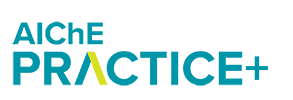
LIMITED TIME OFFER: Use promo code SUMMERSALE20 to take 20% off on eLearning courses.
Uncontrolled fire can have devastating consequences in an industrial setting. Thus, anyone working in a process industry should be aware of potential fire hazards. In this intermediate course, students will study real incidents of fires in process industries, learn to evaluate fire risks and impacts, and discover how to prevent and control fires. By taking an in-depth look at different types of fires (including beneficial applications), learning the necessary conditions for fires to develop, and assessing the flammability of various materials and fuels, this course will equip students to spot and control fire hazards in a range of process industries. Students will be able to assess the impact of fire on people and equipment and suggest fire prevention and mitigation measures for different hazard situations.
Unit 1:
- Define ""fire"" and identify various types of fires
- List examples of beneficial industrial applications of fire
- Describe major fire-related process safety incidents, including identification of root causes and lessons learned
- Use the fire triangle to identify the three requirements necessary for fire
Unit 2:
- Assess the relative fire hazard of a material based on the material’s physical characteristics
- Estimate the upper and lower flammability limit of a mixture of fuels
- Explain the effects of inert gas addition, temperature and pressure on flammability
Unit 3:
- Assess the potential impacts of fire on people and equipment
- List potential domino effects of fire
Unit 4:
- Explain how to reduce risk with common fire prevention and mitigation measures for various hazard situations in a process facility
- Locate the most common standards and guidelines on fire prevention
This intermediate course is for upper-level chemical engineering undergraduates who have had some exposure to process safety.
- Unit 1 – Introduction to Fire
- Define "fire" and identify various types of fires
- List examples of beneficial industrial applications of fire
- Describe major fire-related process safety incidents, including identification of root causes and lessons learned
- Use the fire triangle to identify the three requirements necessary for fire
- Unit 2 – Evaluating the Risk of Fire
- Assess the relative fire hazard of a material based on the material's physical characteristics
- Estimate the upper and lower flammability limit of a mixture of fuels
- Explain the effects of inert gas addition, temperature and pressure on flammability
- Unit 3 – Assessing the Potential Impact of Fire
- Assess the potential impacts of fire on people and equipment
- List potential domino effects of fire
- Unit 4 – Preventing and Mitigating Fire Hazards
- Explain how to reduce risk with common fire prevention and mitigation measures for various hazard situations in a process facility
- Locate the most common standards and guidelines on fire prevention
Find answers to questions about registration and refunds, tuition and fees, travel and lodging (for location-based courses), how eLearning courses work, how credits work, and more.


